In a world brimming with technological wonders, an astounding 75 billion IoT devices are predicted to be online by 2025. Yet, behind this colossal network of interconnectedness, an unseen yet transformative force is at play—blockchain technology. Seamlessly integrating blockchain and IoT, this synergy is set to redefine trust, efficiency, and connectivity across diverse digital landscapes. From enhancing IoT security to advancing blockchain development, the convergence of these two technologies is not just reshaping how IoT applications operate, but it is setting the stage for unprecedented blockchain use cases that promise to secure our digital tomorrow.
Imagine the possibilities where every IoT device in your life—from smart thermostats to complex manufacturing sensors—communicates securely thanks to blockchain solutions. This integration isn’t merely a tech marvel; it’s a necessity in a world that values data integrity and system reliability. Blockchain and IoT stand as the twin pillars supporting a future where blockchain integration with IoT applications elevates IoT connectivity to new horizons, and blockchain development keeps pace with the spiraling numbers of smart devices.
Grasping the full scope of what this fusion entails requires an understanding not only of the potential of each technology but how, when woven together, they create an unbreakable digital fabric. As you navigate through the intricate tapestry of blockchain integration’s implications for our digitally-enhanced reality, you’ll discover not only the resilience it adds to IoT security but also the novel dimensions it unlocks for future innovation.
Contents
- 1 Understanding the Fusion of Blockchain and IoT
- 2 Building Trust and Security in IoT with Blockchain Solutions
- 3 Enabling Greater Flexibility with Blockchain Integration in IoT
- 4 Streamlining Processes and Creating Efficiencies
- 5 Blockchain and IoT Transforming Industries
- 6 IoT and Blockchain Applications in Freight and Transportation
- 7 Advancing Manufacturing with Component Tracking and Compliance
- 8 Blockchain’s Role in Operational Maintenance and Data Logging
- 9 The Combined Value of Blockchain, AI, and IoT
- 10 Addressing IoT Security Challenges Through Blockchain
- 11 Blockchain and IoT
- 12 The Evolution of IoT and Blockchain Technologies in Dgtl Infra
- 13 Conclusion
- 14 FAQ
- 14.1 What is the fusion of blockchain and IoT?
- 14.2 How do IoT and blockchain work together?
- 14.3 How does blockchain technology build trust and security in IoT?
- 14.4 What benefits does blockchain integration offer in IoT?
- 14.5 How can blockchain streamline processes and create efficiencies in various industries?
- 14.6 How is blockchain transforming supply chain management and retail?
- 14.7 What are the applications of IoT and blockchain in freight and transportation?
- 14.8 How can blockchain enhance manufacturing with component tracking and compliance?
- 14.9 What is the role of blockchain in operational maintenance and data logging for IoT devices?
- 14.10 How does the combination of blockchain, AI, and IoT create value in various industries?
- 14.11 How does blockchain address IoT security challenges?
- 14.12 What is the future potential of blockchain and IoT integration?
- 14.13 How have IoT and blockchain technologies evolved, and what are their use cases?
- 14.14 Can you provide a summary of the key points regarding the use of blockchain technology in IoT?
- 15 Source Links
Key Takeaways
- The impressive growth of IoT devices demands robust blockchain solutions for enhanced security and trust.
- Blockchain technology serves as a pivotal foundation for reliable IoT connectivity and data exchange.
- Blockchain integration leads to the development of new applications and use cases, securing the vast landscape of IoT devices.
- Understanding the synergy between blockchain and IoT is essential for businesses to leverage their combined potential effectively.
- Blockchain development continues to evolve in response to the expanding universe of IoT applications and the security challenges they face.
Understanding the Fusion of Blockchain and IoT
The intersection of blockchain and IoT represents a significant shift in how we perceive and utilize interconnected devices. While IoT with blockchain is still an evolving concept, its potential to revolutionize data integrity and security is immense. This fusion signifies a move towards a more secure, decentralized method of information exchange, enhancing the efficacy of connected ecosystems globally.
Defining IoT with blockchain
At its core, IoT comprises devices that communicate with one another, compiling data for analysis and action. By incorporating blockchain into this equation, each transaction — or data exchange — within the IoT network is securely recorded. The synergy between IoT and blockchain effectively transforms these networks into more reliable and transparent systems. Blockchain’s robust security protocols ensure that each piece of data is an immutable record, verifiable by all parties involved.
How IoT and blockchain work synergistically
The synergy between IoT and blockchain stems from their mutual strengthening of security and efficiency. Blockchain offers a distributed ledger that is both transparent and unchangeable. When this trait is applied to IoT networks, each connected device becomes part of an expansive tapestry of trust. This trust is paramount for systems reliant on vast amounts of data, originating from myriads of sources. Potentially, every smart device can attest to the accuracy of its generated data, creating an ecosystem where the integrity of information is paramount.
In addition to security, blockchain augments IoT with a level of automation heretofore unseen. Smart contracts, which are automated, self-executing contracts with the terms of the agreement directly written into code, can facilitate instantaneous and secure transactions without the need for third-party intermediaries. As a result, the fusion of blockchain and IoT ushers in a new era of innovation, with countless applications across industries.
| Blockchain Characteristic | Benefit to IoT |
|---|---|
| Decentralization | Reduces single points of failure and increases system resilience |
| Immutability | Ensures data integrity by preventing tampering and revisions |
| Transparency | Provides audit trails and accountability for all network participants |
| Security | Enhances protection of data through encryption and consensus mechanisms |
| Smart Contracts | Automates processes, thus reducing operational cost and increasing efficiency |
Embracing the fusion of blockchain and IoT not only strengthens the existing infrastructure but also paves the way for new, more robust architectures. As organizations begin to understand and deploy this innovative combination, the promise of a more secure and cohesive digital future becomes tangible.
Building Trust and Security in IoT with Blockchain Solutions
As the Internet of Things (IoT) becomes increasingly integrated into key sectors of the economy, trust and security in IoT have emerged as paramount concerns. Blockchain’s prowess in creating secure environments is lending a powerful solution to these challenges, providing blockchain solutions for IoT that can fortify the infrastructure against myriad threats. In this exploration, we will delve into how the immutable nature of blockchain technology solidifies the foundation of trust through immutable data records, and how it augments IoT device security.
Immutable Data Records for Accountability
When it comes to data integrity, nothing rivals the assurance blockchain offers. Each record on a blockchain is enshrined in a chain of cryptographic hashes, thereby creating immutable data records which serve as a bulwark against tampering. Consequently, entities involved in IoT ecosystems can relish in newfound levels of accountability and transparency. A transaction once recorded becomes part of an unchangeable ledger, offering a clear and auditable trail.
Enhancing IoT Device Security
IoT networks involve countless devices, often in dispersed geographical locations, each a potential entry point for security breaches. By applying blockchain technology, each device can assert its identity through robust cryptographic methods, creating a decentralized system of IoT device security. Access is effectively controlled and monitored, with any unauthorized access attempt becoming a glaring anomaly amidst a landscape of verified nodes.
| Aspect of Trust and Security | Challenges in IoT | Blockchain Solutions |
|---|---|---|
| Data Integrity | Prone to modification | Immutable ledger |
| Authentication | Centralized authentication points are hackable | Decentralized identities |
| Transparency | Lack of visibility in data trails | Transparent transaction history |
| Access Control | Unregulated device communications | Secure and auditable access permissions |
Leveraging blockchain solutions within IoT constructs goes beyond merely adding a layer of security; it redefines the essence of how trust is woven into the very fabric of IoT communications. With every device becoming a steadfast contributor to an overarching network of certainty, blockchain stands as the harbinger of a new era of secure, reliable IoT operations.
Enabling Greater Flexibility with Blockchain Integration in IoT
As industries increasingly turn towards Internet of Things (IoT) solutions to revolutionize business processes, the imperative for flexible IoT solutions becomes apparent. Embracing blockchain integration in IoT offers an unprecedented opportunity to reshape traditional centralized networks into tailored, decentralized IoT networks. This transition not only underlines the benefits of blockchain integration, but also ensures a resilient infrastructure capable of adapting to evolving demands and challenges.
Decentralization stands at the core of this transformation, pivoting away from models that rely heavily on single points of control. By distributing the ledger across a network, blockchain ensures that data integrity is maintained without the need for a central authority. This design offers enhanced security and a reduction of systemic weaknesses. As you consider integrating blockchain into your IoT projects, you unlock capabilities that foster peer-to-peer communication and seamless device interoperability.
The application of smart contracts in IoT furthers this notion of agility. These self-executing contractual states, stored within the blockchain, trigger actions automatically when predetermined conditions are met. This implies that machines can make decisions and execute transactions in real-time without human intervention. Envision your network of devices carrying out complex tasks independently, securely, and efficiently, calibrated perfectly to the stipulations outlined within these digital contracts.
- Smart contracts execute automatically, simplifying process management
- Enhanced device interoperability promotes system-wide efficiency
- Reduction in dependency on centralized systems minimizes points of failure
In essence, the marriage of blockchain with IoT constructs a landscape where devices are not only interconnected but also endowed with the ability to interact, transact, and evolve autonomously. This positions businesses at the vanguard of technological advancement, ready to harness the full potential of blockchain integration in IoT to scale new heights of innovation and capability.
Streamlining Processes and Creating Efficiencies
As the business landscape evolves, incorporating blockchain into the Internet of Things (IoT) is reshaping how industries operate. Companies are witnessing substantial advancements in the way they conduct business, marking an era where efficiency in IoT is not just a goal but a tangible outcome. This significant overhaul in operations is largely due to the potential of streamlining processes with blockchain, reducing overhead, and increasing transparency across networks.
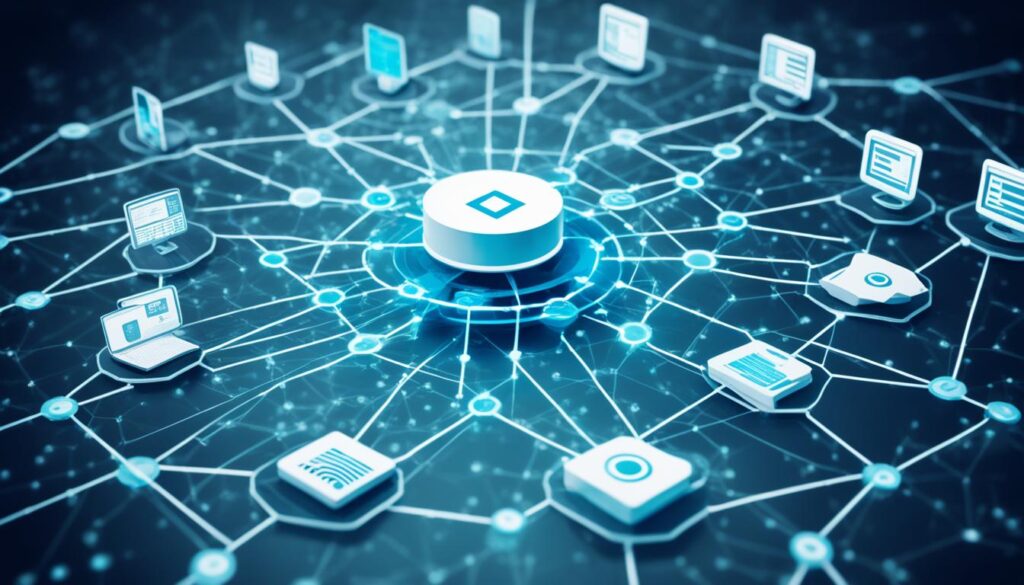
New business models with blockchain-enhanced IoT
As blockchain technology matures, it is paving the way for new business models with blockchain, especially within IoT ecosystems. By enabling secure and transparent data sharing, smart contracts, and decentralized applications, blockchain is unlocking opportunities for companies to craft innovative services and products that were previously infeasible or cost-prohibitive. A profound transformation is occurring where businesses are not only rethinking their operational frameworks but also the very essence of how they create value for customers.
Cost reduction through smart operations
The integration of blockchain within IoT is proving to be a catalyst for cost reduction through smart operations. Smart contracts automate many manual processes, eliminating the need for intermediaries while ensuring that transactions are executed only when predefined conditions are met. This level of automation and precision leads to leaner operational models with fewer resources required, translating into lower operational costs and enhanced overall efficiency.
| Blockchain Feature | Impact on IoT Efficiency | Cost-Reduction Example |
|---|---|---|
| Decentralization | Reduces single points of failure, enhancing network reliability | Maintenance cost reduction due to fewer system outages |
| Transparency | Real-time tracking of assets and operations | Fewer discrepancies in asset management equates to lower reconciliation expenses |
| Smart Contracts | Automates tasks and enforces conditions without human intervention | Streamlined invoicing and payments with fewer accounting errors |
| Security | Robust encryption and consensus mechanisms protect data integrity | Decreased expenses related to data breaches and fraud |
Blockchain and IoT Transforming Industries
The convergence of blockchain and IoT in industries is not just a buzzword; it’s actively re-engineering business landscapes by providing unprecedented levels of transparency and efficiency. The capacity of blockchain to ensure secure, trustworthy transactions, combined with the data-rich insights generated from IoT, is propelling an industry transformation with blockchain at the helm.
Envision a world where blockchain in supply chain management means the journey of a product, from raw materials to the hands of the consumer, can be tracked with impeccable precision. The integration of blockchain ensures this reality is within reach, marking a significant shift toward a more transparent, reliable exchange of goods.
Revolutionizing supply chain management
Blockchain use cases in industries are rife, but supply chain management stands out. Blockchain not only introduces transparency but also enhances the coordination of disparate entities within the supply chain network. Real-time tracking of goods, verification of the origins, and streamlined inventory checking are now possible, thanks to blockchain and IoT in industries.
Innovating in retail through transparency
Retailers are equally feeling the seismic shift as transparency in retail with blockchain takes center stage. Consumers today demand to know the provenance and authenticity of their purchases. Blockchain comes in as a hero, enabling brands to share a tamper-proof history of their products with customers, thus fostering trust and brand loyalty.
| Impact on Industry | With Blockchain and IoT | Without Blockchain and IoT |
|---|---|---|
| Supply Chain Visibility | End-to-end tracking and authentication | Limited visibility and potential for fraud |
| Inventory Management | Automated, real-time updates | Manual, often delayed updates |
| Retail Consumer Trust | High transparency builds trust | Opaque processes inhibit assurance |
| Coordination Across Entities | Decentralized and efficient | Centralized and often inefficient |
IoT and Blockchain Applications in Freight and Transportation
As you delve into the innovative integration of blockchain and IoT in freight and transportation, it becomes evident that this technological convergence paves the way for smart logistics with blockchain. Blockchain’s inherent security and immutability coupled with IoT’s extensive sensor networks cultivate a fertile ground for secure data exchange in transportation, a necessity in today’s globally connected economy.
Imagine real-time tracking and monitoring of cargo as it moves from origin to destination. This is made possible by IoT applications in transportation, which, when combined with blockchain, guarantee the integrity of the data shared across all stakeholders. The transparency afforded by blockchain technology ensures that all parties can trust the information being exchanged, reducing disputes and streamlining operations.
| Application | Benefits | Technological Tools Used |
|---|---|---|
| Real-Time Cargo Tracking | Enhanced visibility and timely delivery | IoT sensors, GPS, Blockchain-based platforms |
| Automated Freight Payment | Simplified transactions, reduced paperwork | Smart Contracts, Cryptographic Wallets |
| Secure Data Exchange | Improved privacy, reduced risk of data breaches | Blockchain ledgers, Encryption technologies |
| Smart Inventory Management | Optimized stock levels, reduced holding costs | IoT-enabled smart shelves, Blockchain records |
The use of smart contracts is particularly transformative in enforcing agreements and making automatic payments without the need for intermediaries. This not only streamlines billing processes but also substantially lowers administrative costs and nearly eliminates billing errors.
Furthermore, the integration of blockchain and IoT highlights the potential for revolutionizing insurance claims within the freight and transportation industry. Blockchain’s audit-able ledger in combination with IoT’s meticulous data collection allows for more accurate and virtually immediate processing of claims, significantly improving efficiency and customer satisfaction.
In conclusion, the adoption of blockchain and IoT is not a mere enhancement to existing systems; it’s a forward-thinking leap into the future of freight and transportation. Reaping the benefits of these technologies requires a willingness to embrace innovation and invest in our infrastructure today.
Advancing Manufacturing with Component Tracking and Compliance
The manufacturing sector is in the midst of a profound digital transformation, harnessing the power of blockchain technology to revolutionize component tracking and compliance. The alignment of blockchain in manufacturing not only augments product safety but also streamlines the sharing of vital compliance data, fostering a new era of operational transparency and efficiency.
Improving Product Safety and Regulatory Adherence
Manufacturers are now leveraging blockchain’s inherent characteristics to enhance product safety with blockchain. The ability to create an immutable ledger of components and their origins drastically reduces incidents related to counterfeit or substandard parts. This technology provides companies with the tools to achieve and demonstrate compliance with regulations more effectively, meeting both safety standards and consumer expectations for quality.
Easing the Sharing of Compliance Data
In addition to bolstering product safety, blockchain technology simplifies the process of compliance data sharing. The decentralized nature of blockchain allows manufacturers to securely share compliance information across the supply chain, mitigating risks and ensuring all parties adhere to the required standards. The transparency of blockchain-supported systems paves the way for a more collaborative approach to manufacturing and supply chain management.
| Traditional Compliance Tracking | Blockchain-enabled Compliance Tracking |
|---|---|
| Centralized databases | Decentralized ledgers |
| Manual verification processes | Automated smart contracts |
| Data silos and limited visibility | Enhanced traceability and transparency |
| Increased risk of error and fraud | Reduced counterfeiting and improved authenticity |
| Restrictive data sharing protocols | Streamlined compliance data sharing |
| Complex regulatory compliance | Simplified regulatory adherence |
Aspects like component tracking and compliance in IoT are now more manageable and trustworthy thanks to blockchain. Adopting these innovative technologies is not just about keeping pace with industry trends; it’s about taking a proactive step towards ensuring the utmost integrity of manufacturing processes and end products. The future of manufacturing is smart, secure, and sustainable—key values that blockchain technology is primed to deliver.
Blockchain’s Role in Operational Maintenance and Data Logging
As industries converge on the digital frontier, the symbiosis of blockchain in operational maintenance and IoT data logging with blockchain fosters a new paradigm of asset management. This transformative approach ensures not only secure data storage in IoT but also imbues a layer of unimpeachable integrity in maintenance records. You’ll find that the utilization of blockchain is more than a trend; it’s an operational necessity that fortifies the backbone of contemporary IoT networks.
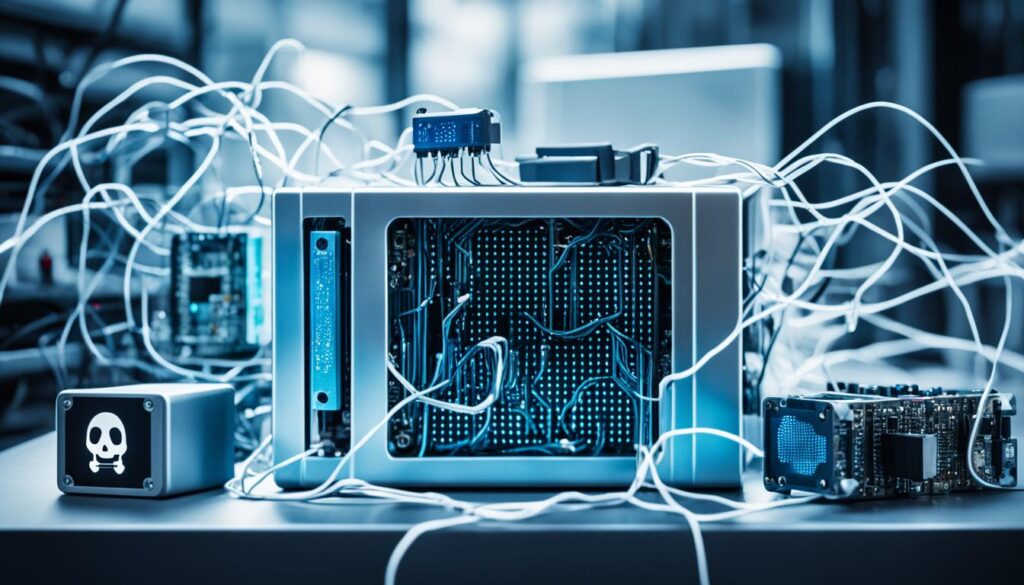
In the intricate dance of data and devices, blockchain for maintenance records serves as the immutable choreographer, ensuring that each step in the maintenance process is logged, verifiable, and resistant to the complications of human error and deliberate tampering. Imagine a logbook, impervious to the ravages of time and risk, and you have an inkling of blockchain’s significance here.
| Feature | Benefit | Blockchain Implementation |
|---|---|---|
| Data Integrity | Maintains a permanent, unalterable record | Hashing algorithms and time-stamping |
| Security | Prevents unauthorized data access | Cryptography and access rights |
| Transparency | Allows stakeholders to audit and trust the data | Distributed ledger technology |
| Accountability | Tracks actions to individuals or groups | Smart contracts to log user interactions |
| Durability | Ensures the longevity of data | Redundant data storage across nodes |
The innate strength of blockchain’s architecture becomes evident when applied to IoT data logging with blockchain. Devices fitted with myriad sensors feed into a larger, decentralized network, where each byte of information contributes to an accumulative wisdom that defines predictive maintenance and efficient operational practices. It’s an ever-expanding nexus, powered by the unassailable fortification of blockchain’s secure protocols.
- Inventory Monitoring: Real-time data capture and analysis lead to optimized stock levels.
- Quality Control: Trace every component back to its source, ensuring manufacturers meet imposed standards.
- Resource Planning: Automated analysis of maintenance schedules maximizes up-time and reduces waste.
In effect, harnessing blockchain in operational maintenance is an act of enlightening the darkest corners of data management. Every action, from component installation to routine check-ups, is forever etched into the blockchain network, allowing for crisp retrospective analytics and proactive decision-making.
The Combined Value of Blockchain, AI, and IoT
As we delve deeper into the digital age, the integration of blockchain, artificial intelligence (AI), and the Internet of Things (IoT) is becoming increasingly critical. Together, these technologies forge a powerful trifecta capable of transforming entire industries by introducing unprecedented levels of trust, transparency, and efficiency into data-driven solutions. In this exclusive analysis, we’ll uncover the remarkable potential that lies within the synergy of AI and IoT with blockchain, a partnership that stands at the forefront of technological innovation.
Fostering trust and transparency with data-driven solutions
For businesses looking to scale securely, the combined value of blockchain, AI, and IoT promises to shatter the traditional boundaries of data management. Blockchain serves as a robust foundation, ensuring data immutability, while AI provides intelligent analysis for swift, informed decision-making. When integrated with IoT’s robust network, the result is an ecosystem where trust and transparency with data-driven solutions are not merely aspirational goals but tangible realities. This integration is crucial in sectors such as finance and healthcare, where data sensitivity is paramount.
Exploring the synergy of AI and IoT with blockchain
By exploring the synergy of AI and IoT with blockchain, organizations can tap into AI’s ability to analyze large data sets generated by IoT devices, with blockchain guaranteeing the integrity of such data. This unity enhances predictive maintenance in manufacturing, streamlines supply chains by offering real-time, authentic data, and even supports the creation of smart cities that are responsive to their residents’ needs. As these technologies converge, businesses are not only equipped to handle the current influx of data but are also future-proofing their operations.
Ultimately, the fusion of blockchain, AI, and IoT heralds a new era of digital solutions—ushering in a wave of innovative applications that were once thought impossible. It’s a thrilling time for enterprises ready to invest in this revolutionary triad, assuming the mantle of pioneers in a digitally connected world.
Addressing IoT Security Challenges Through Blockchain
As the proliferation of Internet of Things (IoT) devices continues to surge, the landscape of digital connectivity is evolving rapidly. Yet, this expansion brings to light significant IoT security challenges that must be addressed. Within this sphere, blockchain is emerging as a powerful ally, offering innovative solutions for enhancing IoT security and maintaining the integrity of devices that permeate our daily lives.
The Impact of DDoS Attacks on IoT Devices
One of the most prevalent threats to IoT devices is Distributed Denial of Service (DDoS) attacks. Such cyber-attacks aim to overwhelm devices with floods of internet traffic, rendering them dysfunctional. This can cause significant disruptions in service and compromise sensitive data. The susceptibility of IoT devices to DDoS attacks on IoT devices stands as a worrisome issue that blockchain technology with its decentralized nature could mitigate effectively.

Blockchain as a Remedial Measure for IoT Vulnerabilities
Blockchain for IoT security introduces an innovative paradigm shift. By utilizing a decentralized ledger, it becomes exceedingly difficult for malicious entities to manipulate or corrupt data across a network of IoT devices. Blockchain’s inherent characteristics of transparency, immutability, and tamper-resistance make it an ideal remedial measure for countering central points of failure that IoT networks face. Below we detail some key benefits of utilizing blockchain as a remedial measure in enhancing IoT security:
| Blockchain Feature | IoT Security Enhancement |
|---|---|
| Decentralization | Reduces risk of centralized attacks, distributing data across multiple nodes. |
| Encryption | Secures data transmission, making it difficult for unauthorized access. |
| Transparency | Ensures traceable transactions, enhancing accountability and trust. |
| Smart Contracts | Automates agreements and enforces policies without human intervention. |
| Immutability | Once recorded, data cannot be altered, protecting against tampering. |
Ultimately, incorporating blockchain as a remedial measure imparts a layer of fortification to IoT devices against ever-evolving cyber threats. Through its strategic deployment, blockchain holds the potential not only to resolve but also to proactively shield IoT networks from a vast array of vulnerabilities.
Blockchain and IoT
The integration of blockchain and IoT is an unfolding chapter in the narrative of digital transformation. Your anticipation for what the future of blockchain and IoT might bring is met with a surge of innovation and expansion in these sectors. The synergy between these technologies is poised to remodel the way data is shared, stored, and secured across various industries.
Envision a scenario where every IoT device is capable of sending data to a blockchain, creating a decentralized repository of information that is both secure and transparent. This powerful combination not only fortifies the integrity of IoT devices but also unlocks new possibilities in automation and smart contracts. As you delve deeper into this realm, it becomes clear that the blockchain and IoT fusion represents a significant leap toward more autonomous, trust-based systems.
“The integration of blockchain and IoT marks the beginning of an era where technology serves as a foundation for trust and operational excellence in a digitized world.”
But what specific changes can you expect to see in the not-so-distant future? Let’s consider the potential impacts and scenarios:
- The creation of fully autonomous business ecosystems, with smart contracts facilitating seamless and secure transactions.
- Supply chains where transparency is not just a buzzword but a reality, fostering confidence among consumers and stakeholders.
- The growth of innovative service models where devices can autonomously transact and cooperate on behalf of their users.
- Enhanced privacy and security protocols that safeguard sensitive data against the burgeoning threat landscape.
The horizon is bright with progress as industry leaders and technologists continue to push the boundaries of what’s possible. To ensure your business remains on the competitive vanguard, it’s critical to stay informed and agile, embracing the future of blockchain and IoT as central pillars in the blueprint of modern infrastructure.
| Technological Impact | Business Benefit | Societal Advancement |
|---|---|---|
| Decentralized Data Management | Increased Operational Efficiency | Enhanced Personal Data Security |
| Peer-to-Peer Communication | Cost Reduction & Risk Mitigation | Creation of Smart Cities |
| Immutable Record Keeping | Transparent & Trustworthy Transactions | Governance and Accountability |
| End-to-End Encryption | Protection Against Cyber Threats | Secure Identities in Digital Economy |
Ultimately, the integration of blockchain and IoT serves as a catalyst for a more interconnected and reliable digital ecosystem. As you look ahead, it’s essential to harness this integration not just to survive but to thrive in the landscape of tomorrow’s industries.
The Evolution of IoT and Blockchain Technologies in Dgtl Infra
The integration of IoT and blockchain technologies has marked a transformative era in digital infrastructure, leading to unprecedented changes in how we secure and manage connected devices. This evolution not only strengthens the fabric of digital communication but also lays the groundwork for smarter and more reliable systems.
Enhancing Security and Privacy in Connected Devices
With the ongoing evolution of IoT and blockchain technologies, a new paradigm for security and privacy in connected devices is emerging. Blockchain’s inherent features such as encryption, decentralization, and immutability provide robust layers of protection, ensuring that sensitive device data is safeguarded against unauthorized access and manipulation.
Use Cases Across Healthcare, Supply Chain, and IIoT
Blockchain use cases in healthcare are revolutionizing patient data management and drug traceability, ensuring that patient records are secure and immutable while facilitating real-time tracking of medical supplies. In the supply chain arena, blockchain’s transparent ledger system enhances traceability and accountability, leading to more efficient operations. The Industrial Internet of Things (IIoT), which leverages both IoT and blockchain, benefits from increased operational uptime and secure automation of industrial processes.
| Industry | Blockchain Benefits | Challenges |
|---|---|---|
| Healthcare | Secure patient data management, efficient drug traceability | Integration with legacy systems, regulatory compliance |
| Supply Chain | Enhanced traceability and accountability, reduced fraud | Complexity of supply chain integration, interoperability between different systems |
| Industrial IoT (IIoT) | Secure data exchange, automated industrial processes | Scalability of the blockchain network, high energy consumption |
In facing these challenges, the key to success lies in continuous innovation and robust collaboration between multidisciplinary teams. As you embrace the evolution of IoT and blockchain technologies, it’s essential to consider their impact on security and privacy in connected devices and how their combined potential can be harnessed effectively.
Conclusion
As we draw to a close on our exploration of blockchain technology within the Internet of Things (IoT), we recognize the significant strides made in enhancing operational efficiency and fortifying security measures. The integration of these two groundbreaking technologies has laid the groundwork for a revolution across various sectors, bringing forth a heightened level of trust and a robust transparent framework for data exchange and device connectivity. A conclusion on blockchain and IoT would not be complete without acknowledging the myriad of benefits that have arisen from this synergistic relationship.
Your understanding of the summary of blockchain and IoT integration should leave you with a clear perspective on how vital these technologies are in building a more resilient and intelligent digital infrastructure. Industries far and wide have seen transformations, from supply chain optimization to bolstering smart city initiatives, all pointing to a future where blockchain and IoT are deeply interwoven into the fabric of technological advancements. The goals of enhancing transparency and security in interconnected systems are no longer aspirational but rapidly becoming operational realities.
In anticipation of future developments, it’s imperative to focus on continued innovation and collaborative endeavors that drive the full potential of blockchain and IoT. The landscape of these technologies is ever-evolving, and your engagement will be critical in charting the course toward smarter, more secure, and interconnected environments. As we wrap up this piece, let this be a clarion call to all innovators, decision-makers, and consumers to remain at the forefront of the technological curve, ensuring that the marriage between blockchain and IoT continues to thrive and redefine our digital horizons.
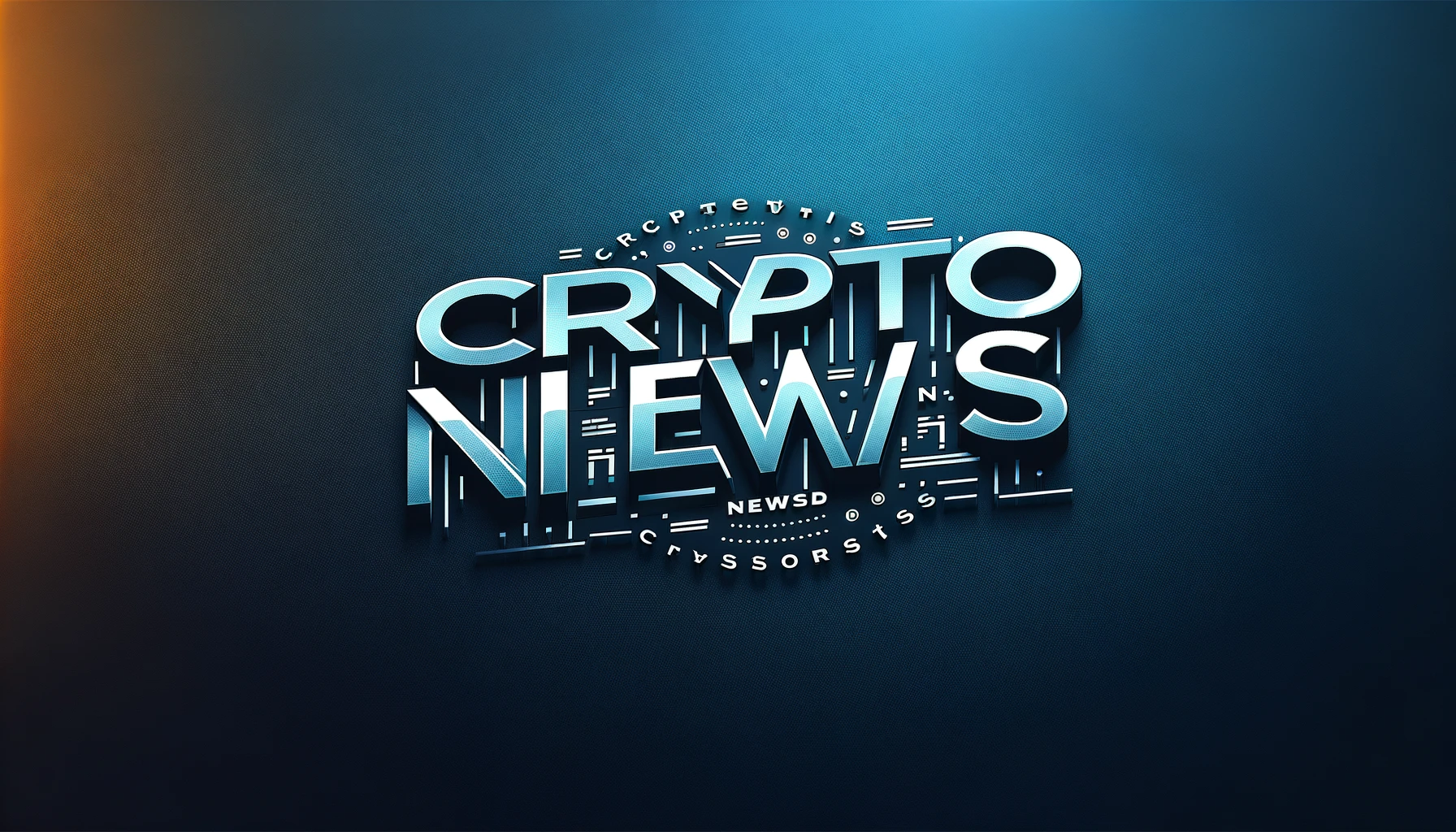


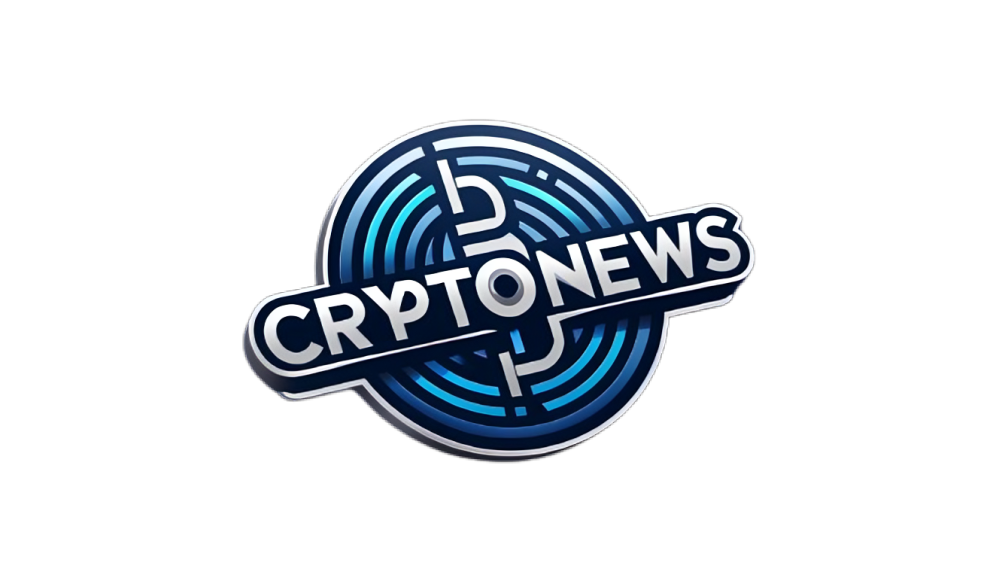
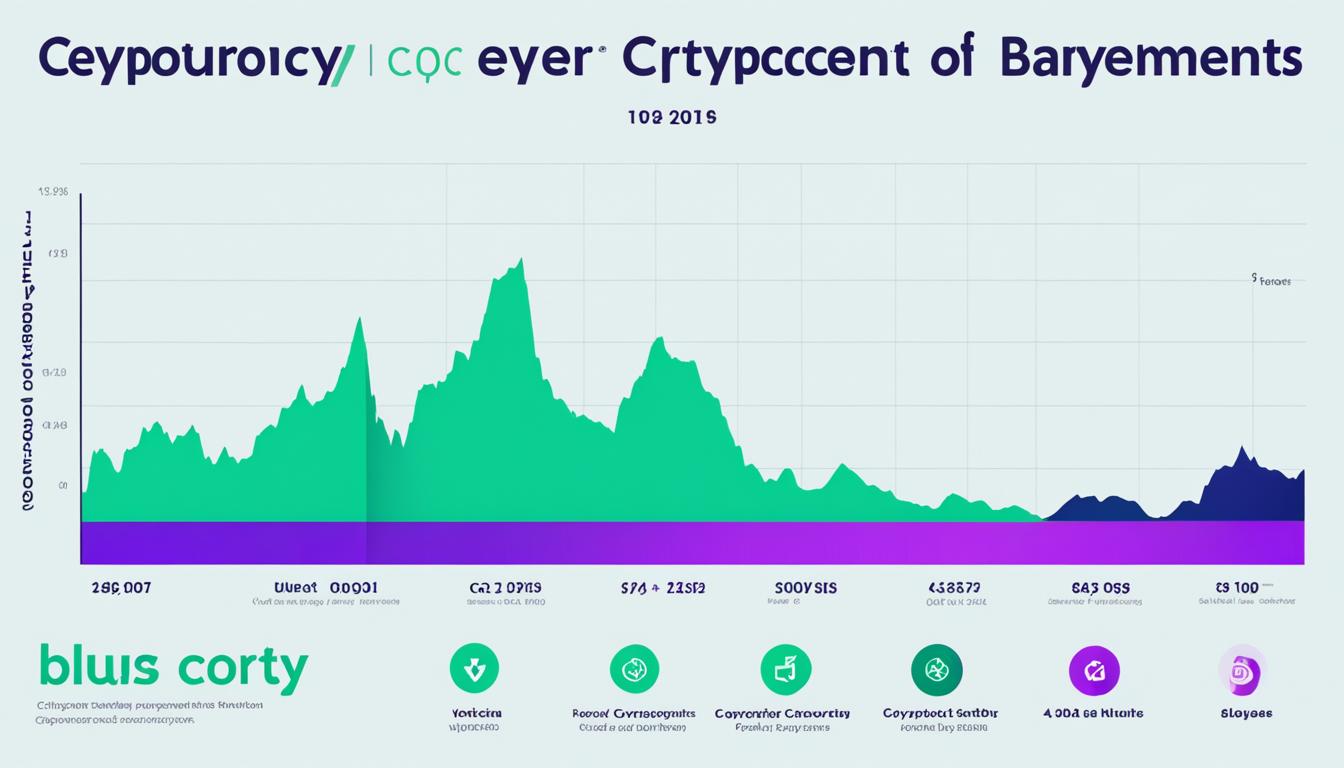


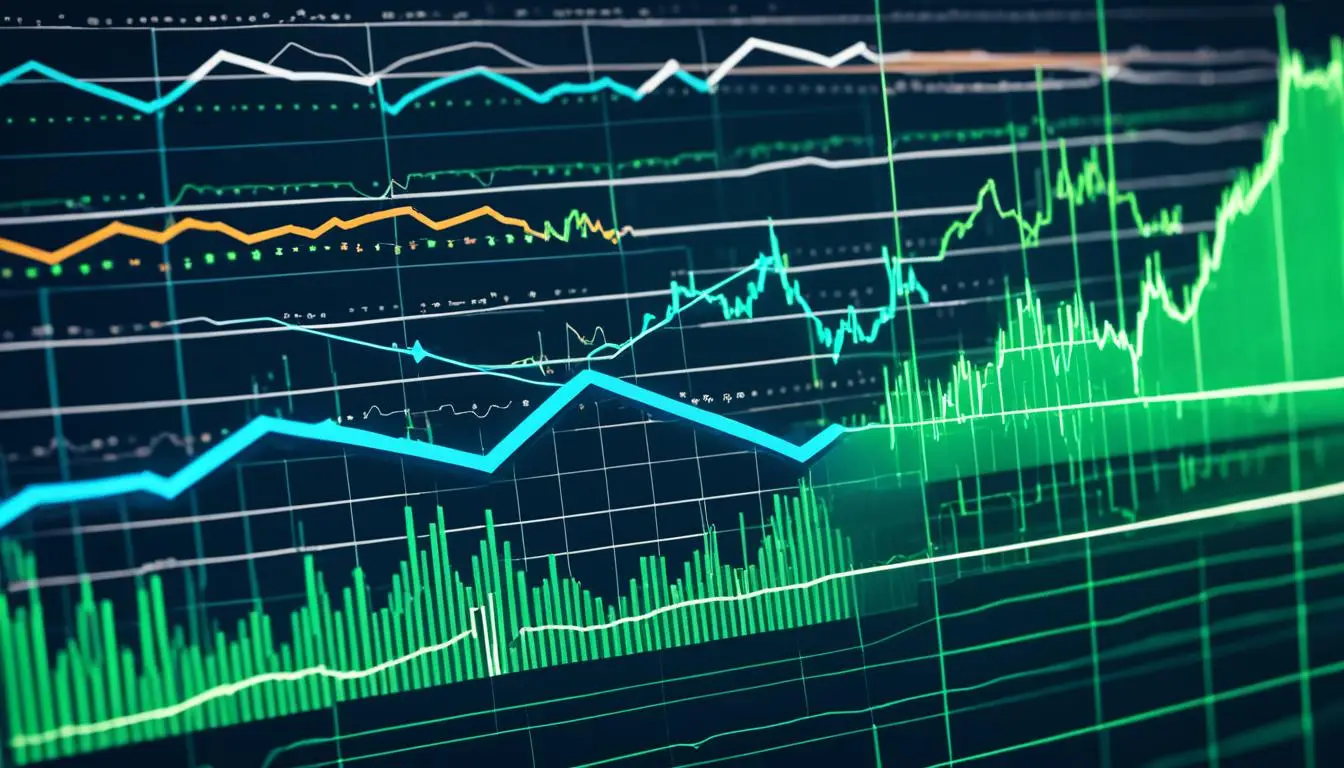

Leave a Reply